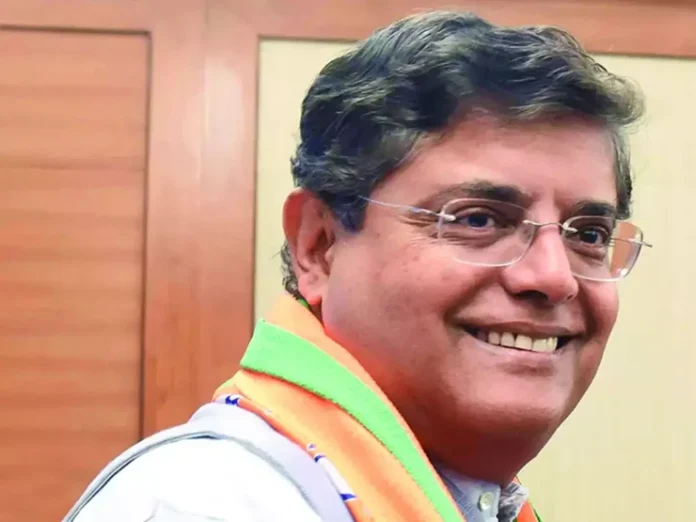New Delhi: The Galwan clash between Indian and Chinese troops in Ladakh in April 2020 showed that India has greater will to stand up against bullying by China and galvanised the nation to reset the Sino-Indian ties, said BJP National Vice President Baijayant ‘Jay’ Panda.
Participating in an international online event over the weekend to release the Hindi version of a study report on ‘Mapping Chinese Footsteps and Influence Operations in India”, Panda said India’s steps during the Ladakh conflict were those no other nation had ever dared to take against China, including banning of China-made mobile applications and facing the military threat with matching force-levels.
Panda, who has been a Member of both Houses of Parliament said he has been involved in Track-2 diplomacy with China for years, but the kind of revelations brought out by the New Delhi-headquartered think-tank Law and Society Alliance on the deep influence Communist China wields among the academia and research institutions have shocked him.
“This is a shocking, must-read study report,” Panda said, releasing the Hindi version, alongside senior China experts from India including Centre for China Analysis and Strategy’s Jayadeva Ranade, Chennai Centre for China Studies Director General Commodore R. S. Vasan (Retired), and policy commentator Arun Anand.
Sharing his experience of handling Chinese diplomats during Track-2 engagements, Panda said they were the only ones during such interactions, who never went off the script of their Chinese Communist Party (CCP).
Panda highlighted the existence of ‘debt-trap diplomacy’ through Communist China’s Belt and Road Initiative to increase its influence all over the world, from Sri Lanka to the African nations. “China has used and abused its free trade opportunities in a manner where the balance of trade always favoured China. This has resulted in many nations across the world being in debt to China,” Panda said.
But, in recent years, more and more nations have become wary of Communist China and have called out Beijing through litigations in international fora, and there have been regional groupings created with the main goal of tackling China, like the Quad in the Indo-Pacific region, he said.
The report touches on topics that have been discussed superficially in India, and does the very important task of actually documenting examples of the Chinese activities of influence in the country. “The examples listed in the report are truly worrisome, especially those Chinese operations where Beijing has focused on academia, and media and is focusing on the entertainment industry,” Panda said.
He said it came as no surprise when the report revealed that China had laid out a budget for working with journalists. “China also does this for several Asian and African countries. This is something that needs to be taken cognizance of.”
Panda said India’s capabilities to deal with such influence operations are improving and the current government’s diplomacy is appreciated. “India’s rise is being celebrated while China’s rise was viewed with suspicion.”
The Law and Society Alliance’s report was first brought out in English a year ago, making India’s security apparatus to take note of its contents, and the strategic affairs community worldwide to mull the deep penetrations among the academia, think-tanks and media that Communist Party of China had achieved over the years.
“The main aim for the Hindi version was to ensure that the report reached a larger audience in India and also to update and enhance several points within the report,” Law and Society Alliance chairman N. C. Bipindra said.
Jayadeva Ranade, said the report should sensitise Indian population to Chinese efforts to increase their influence, specifically referring to the CCP’s United Front Works Department and how it is a secretive, subversive and effective party intelligence organisation.
“Since the ascension of Xi Jinping, China took up a more aggressive policy against those that Beijing does not consider friends. The United Front Works Department has always had two people in the Chinese embassy here in India with the sole goal to target the Tibetans residing here,” Ranade said.
He said China has stepped up their activities in all nations, especially in India, to target young politicians, journalists, academics, businessmen and government officials to bring them into their sphere of influence.
The former Additional Secretary in India’s Cabinet Secretariat said every Chinese company operating overseas had a Chinese intelligence official embedded in it, something explicitly mentioned in the study report.
“The Chinese have been actively targeting Bollywood by using their access to the Chinese market as a bargaining chip. In the same way, the Chinese manipulate young academics by giving them free access to China. There are various ways that the Chinese try to influence India.”
Commodore Vasan, who has served in the Indian Navy for 34 years, said the study report was truly shocking, as there were people within India who have been letting down India. “With friends like these there is no need for enemies.” He suggested that the study report of Law and Society Alliance needs to be made mandatory reading material for all parliamentarians, as the revelations are eye-openers on the Chinese covert and overt operations.
“India has to be very careful, as China is very free with its money and has committed billions of Rupees to influence the country’s intellectual space. Unfortunately, China has managed to infiltrate multiple sectors in India, from media to academia and politics.”
Arun Anand lamented that Indian journalists are not very well versed on the topic of China, and broadly on the topic of geostrategic affairs. “Without basic knowledge, journalists are also not aware if they are falling into a Chinese trap.”
Anand said the publication of the Hindi version of the study report was important in that there was a dearth of knowledge on China among the Hindi media persons, and China focuses on the Hindi media for its influence operations due to the wide reach this media can provide to their messaging.





